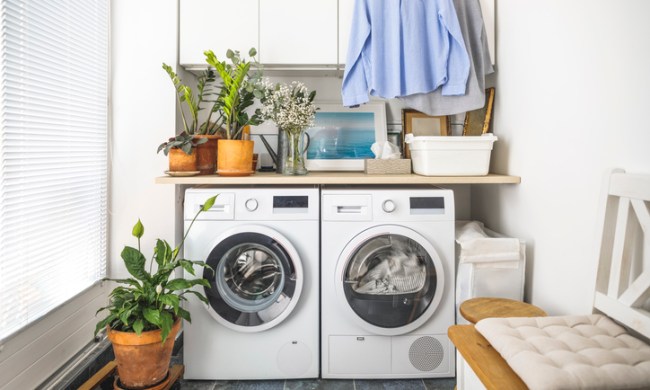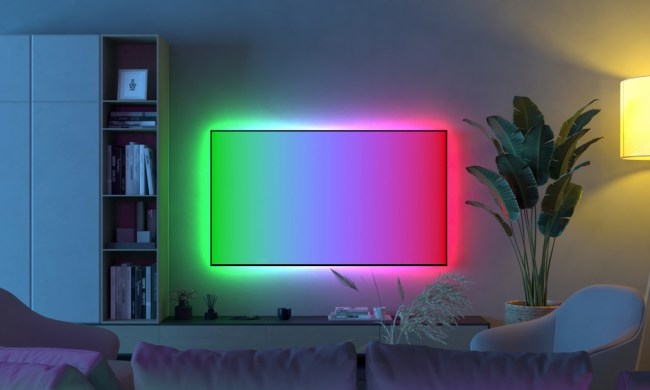Japandi is an emerging trend in home design that blends Japanese and Scandinavian decor styles to create a minimalist, warm, and inviting space. With a focus on minimalism, shape, texture, a neutral palette, and warm undertones, the Japandi style aims to create a space that is comfortable and sophisticated. If you’re interested in Japandi and want to incorporate it into your living room, check out some inspiration we’ve found that has transformed how we think of minimalism.
A play on form
A crucial part of curating a stunning Japandi interior design is knowing how to use form. This is how Japandi interior design differs from minimalism. Where minimalism focuses on straight lines and more rigid shapes, Japandi leans toward forms that create a sense of stylized opposition within a space. This stems from the use of natural materials and raw forms that come from the Scandi aspects of Japandi design.
If you’re curious about how to use form in your Japandi living room, then Instagram user @japandi_design has a setup sure to inspire you. In this gentle, neutral-toned space, the creator features a unique couch with rounded edges that add a soft focal point. Thanks to items like the circular, layered coffee tables and a curved lamp, the room has an organic feel. And since Japandi interior design favors the contrast between both rigid and curved, the designer has also included a rectangular rug and picture frame to tie the whole look together. This is a perfect example of how form can enhance Japandi design.
Focus on raw natural wood
While aspects of Scandinavian and Japanese design are the base of this new trend, the marriage of these two styles is what really allows the Japandi style to thrive. One way this is seen is through the use of tamed raw and natural wood pieces. In Scandinavian home design, it’s common to see raw pieces with rough edges and an organic feel. But in Japanese design, it’s more common to find modern and streamlined furniture.
Instagram user @japandi_interior shows us how to blend these two aspects to create a fresh and new perspective in our living rooms. Smooth, raw wood stools rest in front of the sofa while a natural wood, Japanese-style door highlights the room’s entrance. You’ll also notice the raw wood texture around the kitchen in the back of the space. Lighter wood tones are a staple of Japandi design, reminiscent of the natural wood you might find in Scandi styles. By smoothing and sanding down the rough edges, you can create pieces that adhere to both styles and create something entirely new and exciting.
Opt for fun light fixtures
Since shape and form are vital considerations when designing the perfect Japandi home interior, it’s not surprising that fun and funky light fixtures are a common touch to the design. If you’re searching for a way to spruce up your home with a Japandi influence, we recommend choosing a light fixture that will create an eye-catching focal point in your room.
Instagram user @anthology_creative_studio shares a sophisticated and cozy living space with a feature light that subtly demands attention. What you’ll notice from this post is that while the feature light is unique and grand, it equally blends in with the neutral color palette. This allows the light fixture to look as if it belongs in the space and doesn’t detract from the gentle and minimalistic decor throughout the rest of the room. Modern lighting, particularly asymmetrical fixtures that exaggerate or pronounce unusual shapes and forms, can look stunning in a Japandi interior design. Just be sure to choose lighting that blends with your color palette so you can prevent any clashing!
Use texture to your advantage
User @henna.kotona on Instagram shares another incredible facet of Japandi design. The use of texture in your space when curating the perfect Japandi interior design is vital. Like Scandinavian aesthetics, Japandi looks best with added textures that inspire a sense of coziness. Try pairing plush rugs with woven textures like you see represented in this Instagram post. Or, opt for pairing both raw wood and glass to create an elegant design.
The goal is to pair rugged and rustic textures like raw wool, faux fur, cotton, and tweed with more modern touches like glass, metal, and polished pieces. This is another example of the union of Scandi and Japanese styles, which creates a vibrant, modern, and comfortable aesthetic.
While it’s important to add a variety of textures to your design, it’s best not to go overboard. Repeat certain textures like glass and raw wood, for example, throughout your design to create a cohesive look. Also, be sure that the amount of hard and soft textures are in balance so you can succeed in curating a cozy atmosphere.
Japandi home decor is minimal yet warm and inviting. As a blend of both Japanese and Scandinavian designs, it’s no surprise that warm tones, gentle textures, and minimalistic pieces dominate the space. Be sure to use unique pieces that focus on form, and don’t forget to play around with texture. Neutrals are a safe option and create the perfect seamless look, so keep that in mind when styling your space!



